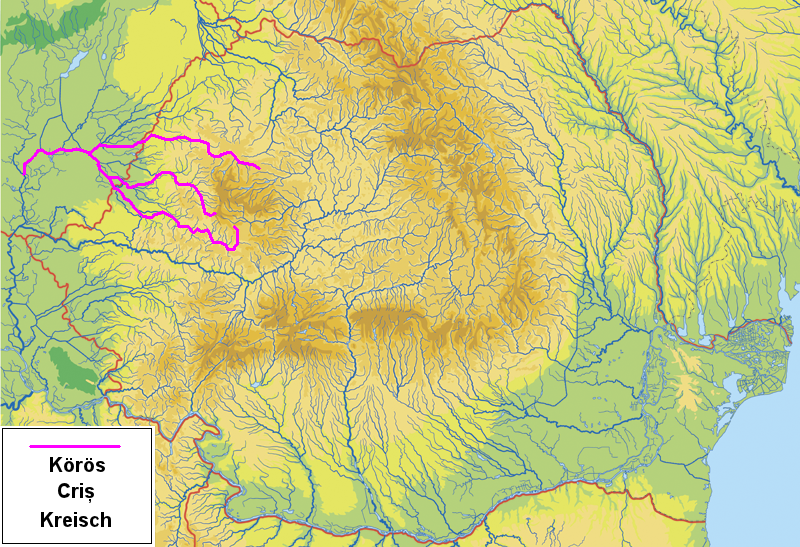Eszter writes*
Water allocation requires complex management directives, with inevitable tradeoffs between different recipients of the agricultural, industrial, or residential spheres and nature, suitable domestic and international policies, as well as a multifaceted decision-making approach, including political, economic, and environmental considerations.
Békéscsaba, in the southeastern part of Hungary, faces the same challenges. Located on the Great Hungarian Plain, the city and the surrounding area are in one of the country’s most agriculturally intensive regions, responsible for feeding many people. On the other hand, a substantial part of Békés County (which holds the city) falls under environmental protection as part of one of Hungary’s ten national parks. Further complicating water management is the proximity and aquatic interconnectedness with neighboring Romania as the main rivers surrounding Békéscsaba originate on the other side of the border, in the high Carpathians.
The following blog post will elaborate on this latter international dimension by looking at the cooperative steps taken for integrated water resources management of the Körös/Crisuri sub-basin.

The aforementioned system of three rivers converges near Békéscsaba, one of the main sub-basins of Hungary’s longest river, the Tisza. The catchment area of the Körös approximates 30000 km2, with an average water volume of 3,437 million m3 annually, thus bearing prominent environmental, economic, and social values both in the southeastern region of the Great Plain as well as in the Western parts of Romania (GWP Toolbox, 2010).
As a response to the pollution calamities striking the river Tisza in the early 2000s and facilitated by their admittance to the EU, Romania, and Hungary developed a collaborative water management strategy over their shared resources in adherence to the requirements enclosed in the EU’s central law for water protection since 2000, the Water Framework Directive (WDF). The WDF is aimed to “protect and […] restore water bodies to reach good status and to prevent deterioration” (European Commission) across the EU, and to incentivize transboundary regional management by allocating districts based on river basins irrespective of national borders.
Enabled by the collaboration of French, Romanian, and Hungarian experts, the strategy, which started in 2005, successfully set up a management body to administer technical assistance over the coordination of respective organizations in the environmental sector. During the span of the first 2 years of operation, the initiative achieved the harmonization of ecosystem monitoring, structured stakeholder, and public involvement through consultations on local water issues, provided economic analyses as well as professional training on quality conduct. Subsequently, the project also aimed to alleviate the impact and occurrence of frequent floods, posing great threats to the agriculturally prominent regions surrounding the river system. Perhaps most importantly, however, it facilitated efficient transboundary data collection and processing in the form of a catalogue of metadata, which lies at the heart of transboundary decision-making on the allocation of shared resources (IOWater 2007).
Bottom Line: Despite the steps taken for the sustainable and responsible management of the Körös/Crisuri basin, the area still faces substantial water shortages throughout the summer, with occasional water flows dropping below 1m3/s. Such dry periods can have detrimental consequences for the local natural vegetation and ecosystem as well as the agricultural production reliant on the river, requiring on average 30-40 million m³ of irrigation water per season. On the other end of the spectrum, certain years are afflicted by inland water and floods (Behír, 2017). These severe fluctuations are highly susceptible to the impacts of climate change and will pose serious challenges to the co-managed region of the Körös catchment area with the probable proliferation of extreme weather events in correlation with global processes.
* Please help my Water Scarcity students by commenting on unclear analysis, alternative perspectives, better data sources, or maybe just saying something nice 🙂
Dear Eszter,
I really enjoyed reading your blog post about Békéscsaba for two main reasons. The first one is a bit biased, but learning something new about my home country, where I spent my whole life is always a bit more special. The other reason is that the case of Békéscsaba seems an especially complex and interesting one since so many different stakeholders are involved. As you highlighted, it is important for the agricultural sector (I imagine both for providing agricultural products for Hungary and for export as well), for the environment because it is located in a protected area, and on top of all this, the management of water does not only depend on Hungary but also on Romania, with whom our relations were/(are) not always impeccable. But it appears, in this situation the potential conflicts of interest were relatively easily resolved. Nevertheless, it will be interesting to see how well the two countries can cooperate in the future to mitigate water scarcity or shortages evoked by climate change. These factors (agriculture, environment, transboundary water management) standing on their own can sometimes cause serious problems for cities regarding water scarcity but here all three play into the situation.
Reading your post, I had the feeling that there’s going to be a “happy end” to this story because towards the end it seemed the issue of transboundary water management was successfully solved. Consequently, I was a bit surprised by your bottom-line description, where you wrote about the current problems the city faces. Although I do understand that your main topic for this blog post was the interconnectedness with Romania, my advice for the future would be either to include the current problems in the body text itself or write a bottom line more closely related to your main topic.
Still, I believe your blog post is very well-written and your topic has a lot of potential! 🙂